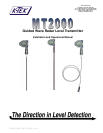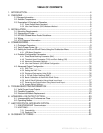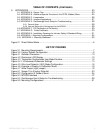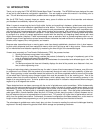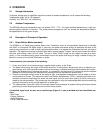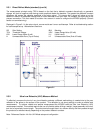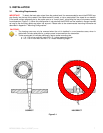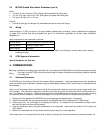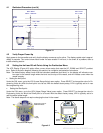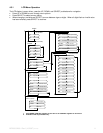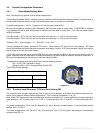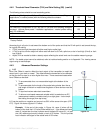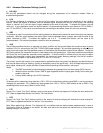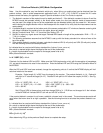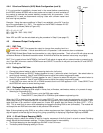4 MT2000-0200-01 Rev f (10-2007)
DCN0160
1.0 INTRODUCTION
Thank you for using the K-TEK MT2000 Guided Wave Radar Transmitter. The MT2000 has been designed for ease
of use and to offer extensive configuration capabilities. You are urged to review this manual in its entirety prior to
use. This will eliminate most installation problems due to improper configuration.
We, the K-TEK Family, sincerely hope you receive many years of reliable use from this transmitter and welcome
your feedback to consistently improve our products.
When it comes to measuring the level of bulk solids, liquids, and everything in between, guided wave radar technol-
ogy now offers more level-detection capabilities than ever before. For an ever-widening range of previously hard-to-
measure products such as molten sulfur, liquid ammonia and petrochemicals, guided wave radar transmitters pro-
vide accurate level measurements even under harsh chemical environments, wide variations in operating tempera-
tures and pressures, and low dielectric constants. Great strides have also been taken in making these units easier
to configure to a variety of process applications coupled with the simplicity of integrating these devices with most
digital communication protocols. These improvements come as welcome relief to process engineers within an ex-
panded range of level applications across several different industries that seek solutions to measuring the contents
of tanks, silos, hoppers, bins, mixing basins, and vessels.
Because radar transmitters have no moving parts, radar has already established a dominant niche in level measur-
ing that quickly distances itself from mechanical means, which don't hold up as well in dirty service. Radar achieves
its non-mechanical level detection capability by measuring the time of flight of the transmitted signal.
Known more accurately as Time Domain Reflectometry (TDR), the process involves:
1. Sending microwave energy down into a vessel.
2. When the pulse of radar energy reaches the product (indicated by a change in impedance), part of the
pulse is reflected back toward the transmitter.
3. A receiver measures the exact duration of time between the transmitted and reflected signal—the "time
of flight."
4. The device analyzes this time and ultimately displays the level of the product as a distance in feet, me-
ters, or other engineering units.
Through-air technology clearly pioneered the way for radar in terms of level measurement. However, one of the ma-
jor problems of non-contact (with the product to be measured) through-air radar is the high probability of false ech-
oes. Simply pointing a radar transmitter toward the bottom of a silo allows unguided waves to bounce off the sides
of the vessel itself, returning many divergent signals that must be canceled out at the receiving end. Part of the
problem stems from the wide dispersion of radar beams, which radiate away from the transmitting antenna in the
shape of an ever-widening cone. A similar problem also presents itself in ultrasonic measurements where divergent
angles of up to 20 degrees are routine.
These obstacles have now been overcome with the arrival of guided-wave radar transmitters. While fundamentally
relying on the same conventional time-of-flight technology used in through-air radars, guided-wave radars go one
step further by controlling the spread of radar beams via a "probe" that is introduced directly into the product to be
measured. Typically, the wave-guide is a specially designed metal rod or cable. Since the guide concentrates the
radar signal within a small-diameter (often less than 12 inches) cylinder along the probe, it doesn't disperse and re-
flect off materials that are not representative of product level. This results in a higher level of performance and reli-
ability from the guided-wave device. Furthermore, the ease of configuration eliminates wasted time, as the need no
longer exists to spend time programming a unit to ignore erroneous readings from the sides of the tank.
The advantages to guided-wave radar clearly play out when it comes to meeting the real-world challenges faced by
engineers in correctly determining product levels within storage and processing containers.



